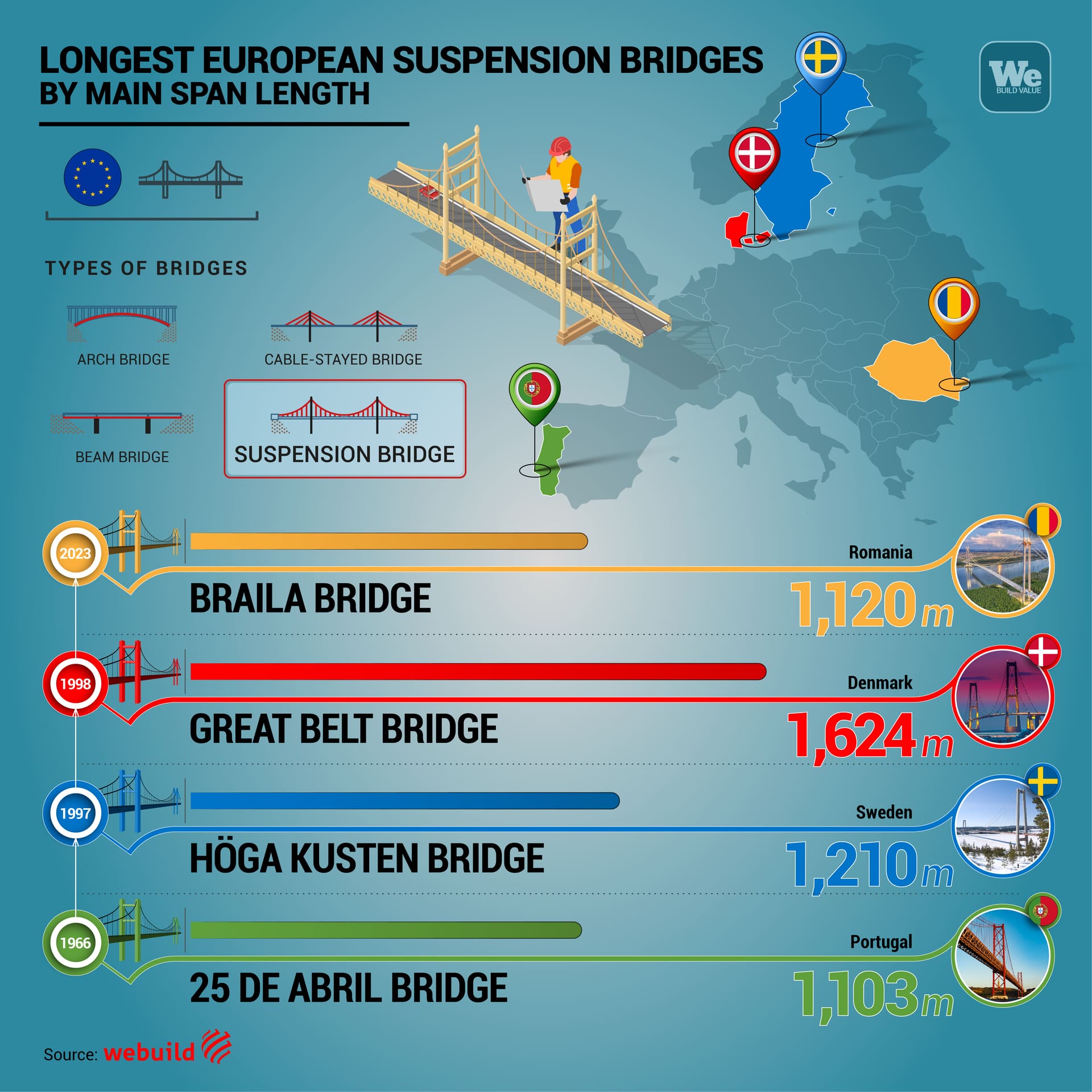In the thousands of years long history of bridges, a turning point in engineering was reached with the construction of suspension bridges. From the Golden Gate Bridge in San Francisco to the Messina Strait bridge in Italy, which will beat the record of longest suspended bridge in the world, these infrastructures have unique characteristics, perfected in time along with engineering science, reaching results that were unimaginable just a few years ago.
The turning point between the archaic conception and the modern one occurred in the 1930s when the United States built the George Washington Bridge, the first modern bridge with a distance of more than 1 km between the two towers holding it up. After the Washington Bridge, new records are reached in the United States with the construction of the Golden Gate in San Francisco, the Verrazzano Bridge in New York City. They all have truss decks and belong to the first generation of modern bridges, which culminates in 1998 with the construction of the Akashi Bridge, still today the longest suspended bridge with a main span that reaches 1,991 meters.
The winged profile of the second generation suspension bridges
Already in the 1960s, while in the United States the Verrazzano bridge was being completed, engineers began studying new characteristics for the huge scaffolding of suspension bridges. The intention was to create structures able to withstand the most violent winds, those of up to 300 km/h. To do so, they started designing winged scaffolding, no longer trusses as in the Golden Gate Bridge but more rounded to let the wind slip off them. The first bridge of this generation was the Severn Bridge, a suspended highway bridge linking England and Wales. The structure is 1,600 meters long, with a central span 988 meters long, and was inaugurated by Queen Elisabeth on September the 8, 1966. The innovation of the Severn Bridge is repeated a few years later with the construction of the first bridge over the Bosphorus, the Humber Bridge in England, and the Great Belt Bridge, a huge bridge built in Denmark with a 1,624 meters long central span, to this day still the longest central span of any suspended bridge in Europe.
The third generation and the future written by the Messina Strait Bridge
The tale of the third generation of suspended bridges must still be fully written. It’s a tale that begins with the Yi Sun-sin bridge in China, 2,260 meters long with a central span of 1,545 meters. It was followed by Turkey’s Canakkale bridge, inaugurated in 2022, the longest suspended bridge in the world with a central span of 2,023 meters. The characteristic of these third generation bridges is their use of aerodynamic scaffolding. In addition to the winged profile of the second generation bridges, these mega-structures use completely aerodynamic scaffolding, which have holes studied specifically to let the wind through. It is an innovation that will reach its highest expression with the Messina Strait bridge. For its construction, a unique model of scaffolding has been designed, called the Messina Type Deck. In addition to the winged profile, which brings to mind a war plane, the shape of the Strait bridge was studied extensively in a wind tunnel and will have openings to let the wind through, minimizing its impact. To understand what an innovation of this kind means, suffice it to say that the Akashi Bridge scaffolding flexes laterally by 30 meters under wind pressure, while the Strait bridge will flex laterally by only 10-11 meters. A truly unique result for a bridge with a central span 3,300 meters long.
Brăila, the Romanian bridge enters Europe’s top 3
The same engineering innovations envisaged for the Strait bridge have been applied in the construction of the bridge over the Danube in Romania. The Brăila bridge, constructed by the Webuild group, will be inaugurated in the coming weeks. Once open, the bridge will take third place on the continent for span length, 1,120 meters, behind the 1,210 meters of the Hoga bridge in Sweden and the 1,624 meters of the Great Belt Bridge in Denmark. Though smaller than the Messina Strait bridge, the Brăila represents the same engineering innovations and is one of the third generation of suspended bridges, world class structures that are rewriting engineering history.


